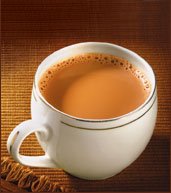In many countries the brew is offered to visiting businessmen anytime the meeting takes place. Similarly it is offered to house guests any time of the day. Tea is also instrumental in cementing relationship. This could be between friends and relatives, lovers and acquaintances and during important meetings.
Tea is consumed most during wedding ceremonies, business meets, seminars, product launches, sporting events and what not.
The consumption usually depends upon the availability of the hot brew. In India chai or spiced tea is available in all urban and rural surroundings hence ordering hot tea is a matter of minutes. The widespread availability of ready chai increases consumption many times.This is thanks to chai wallahs all over the country.
In countries where tea is available only in selected places the consumption declines. This happens in most Western Countries where coffee is more popular. In these countries the brew is not a part of social or ritualistic occasions. Hence the consumption is strongly motivated by personal like. The usage is growing in these countries due to easy availability in malls, market places and online. The product availability online means one can buy any type of leaf from world over. The health benefits are another reason for increased usage in non tea drinking Nations.
Ritualistic consumption of the hot brew is more popular in the Oriental Realm. In Western Countries like UK English Tea Rooms or Tea Parties invite consumption. While traditional ceremonies in China and Japan make green leaf very popular. Certain premium leaves like Darjeeling from India are very popular ceremonial accompaniments in the tea parties.
India is among the major tea producer in the World. The unique leaf known as Darjeeling Tea is grown in the Indian state of West Bengal. Some black leaves from Assam also fall into the premium category.
The blending has become an art form with availabilities of many varieties. Hence major companies employ master tea taster to create the finest blends.





